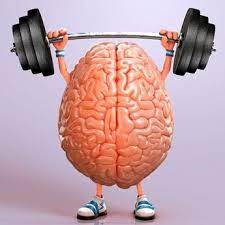Improving Vision Beyond the Eyes
The quality of vision is determined by two main factors: (a) the quality of the image that is transferred from the eye, and (b) the neural processing in the brain. Despite this fundamental fact, the eyecare industry focuses almost solely on bending light rays and restoring the anatomy of the eye, while the back end of the visual system – the visual cortex, is mostly neglected.
In the past three decades, there is growing evidence for the ability to substantially improve vision by visually stimulating the visual cortex using perceptual learning techniques. Clinical observations1 and experimental evidence2 indicate the presence of residual neural plasticity well after the critical period.
The first perceptual learning software to receive an FDA-clearance for the treatment of amblyopia beyond childhood (age 9-55) is RevitalVision (previously NeuroVision). The software uses dedicated algorithms to map the patient’s specific cortical deficits and to tailor specific stimulation programs to match these deficits. The specific neurons are targeted with an effective stimulus that induces a high neural response: the Gabor Patch3. This high response is further facilitated by the use of a proprietary Lateral Masking technique, in which three stimuli are arranged in a specific order to yield a significantly higher response than a single stimulus4. Repetitive strong neural response forms new neural connections at the synapse level, which leads to improved neural processing efficiency.
Four5-8 published randomized controlled trials (RCT’s) demonstrated similar clinical outcomes in adults with amblyopia with an average improvement of 2+ ETDRS lines, a 100% increase in contrast sensitivity function (CSF), and improvement in stereo acuity and binocular functions. Two single-arm studies demonstrated improvement beyond occlusion in children with amblyopia (age 7-8)9 and in adults with amblyopia (age 8-48)10
An additional algorithm of the same software was proven effective in enhancing uncorrected vision in patients with a minor refractive error; low myopia11 and early presbyopia12 enabling better vision without glasses. The algorithm was later proven effective in enhancing VA and CSF in post cataract13 and post refractive surgery patients14, who are challenged with low contrast sensitivity, difficulty to neuro-adapt, and side effects such as halo and glare. Clinical observations14 demonstrated that low CSF following cataract surgery can exist in emmetropic patients with good VA, which explains the term “unhappy 20/20 vision patients”.
Recently, two prospective RCT’s evaluated the efficacy of RevitalVision software in improving vision in congenital nystagmus patients15 and in patients with stable keratoconus post-crossed linking16. Both studies demonstrated significant improvement in VA as well as contrast sensitivity and binocular vision, offering hope to millions of patients with these conditions who are currently lacking effective treatments.
A Stargardt disease study17 and an AMD study18 suggest that retinal disease patients can also benefit from the same vision improvement effect.
Today, the key to optimizing visual functions lies in addressing the brain as well as the eyes!
Author: Yonina Thee, Certified Optometrist M. Optom.
References:
- Moseley and Fielder (2001). Improvement in amblyopic eye function and contralateral eye disease: evidence of residual plasticity. The Lancet
- Polat, Sagi (1994); Spatial interactions in human vision: from near to far via experience-dependent cascade of connections. Proc. Natl Acad. Sci. USA 91, 1206-1209.
- Daugman (1980). Two-dimensional spectral analysis of cortical receptive field profiles. Vision Res 1980; 20:847-56.
- Polat U., Mizobe, K., Kasamatsu, T., Norcia A.M. (1998). Collinear stimuli regulate visual responses depending on Cell’s contrast threshold. Nature, 391, 580-584
- Zhong et al (2022) Journal of Clinical Medicine: Effects of Perceptual Learning on Deprivation Amblyopia in Children with Limbal Dermoid: A Randomized Controlled Trial.
- Battaglini et al (2021) Restorative Neurology and Neuroscience: Perceptual learning improves visual functions in patients with Albinistic Bilateral Amblyopia: A pilot study.
- Yalcin et al (2013) Clinical Ophthalmology: Efficacy of perceptual vision therapy in enhancing visual acuity and contrast sensitivity function in adult Hypermetropic Anisometropic Amblyopia
- Polat et al (2004) PNAS: Improving vision in adult Amblyopia by perceptual learning.
- Polat et al (2009) Vision Res: Treatment of children with Amblyopia by perceptual learning.
- Damaris et al (2022) Vision Development & Rehabilitation (COVD) Volume 8, Issue 4, Page 260: Neural Vision Perceptual Learning as an Effective Treatment of Amblyopia
- Tan et al (2008) JCRS: Efficacy of neural vision therapy to enhance contrast sensitivity function and visual acuity in Low Myopia.
- Durrie et al (2009) Trans Am Ophthalmology Soc: computer-based primary visual cortex training for treatment of Low Myopia and early Presbyopia.
- Waring et al. (2010) ARVO: Evaluation of Computer-Based Primary Visual Cortex Training After Aspheric Monofocal, Multifocal, and Accommodating IOL Implantation
- Donal Tan (2006) APAO: Improving VA and CSF in Subjects with Low Degrees of Myopia and Early Presbyopia using Neural Vision CorrectionÔ (NVCÔ) Technology
- Zmujack-Yehiam et al (2024) AAPOS: Prospective Open Label Randomized Controlled Clinical Study Evaluating the Efficacy of Perceptual Learning in Improving Vision among Patients with Congenital Nystagmus.
- Lional Raj et al (2024) ASCRS: RCT Results of Perceptual Amblyopia Therapy for Improving Vision & Contrast Sensitivity Functions in Crosslinked Stable Keratoconus.
- Mincarelli et al (2018) EC Ophthalmology 9.3 (2018):119-124: Improving Visual Activity Using Gabor Patch Technology in Stargardt Disease: A Retrospective Study.
- Marcello et al (2018) Nature; Scientific Report: Spontaneous and training-induced cortical plasticity in MD patients: Hints from lateral masking
Back to Blog

